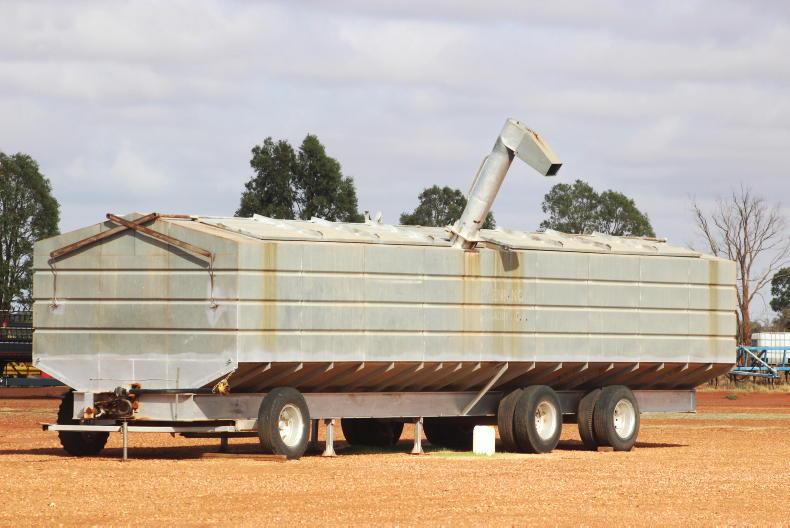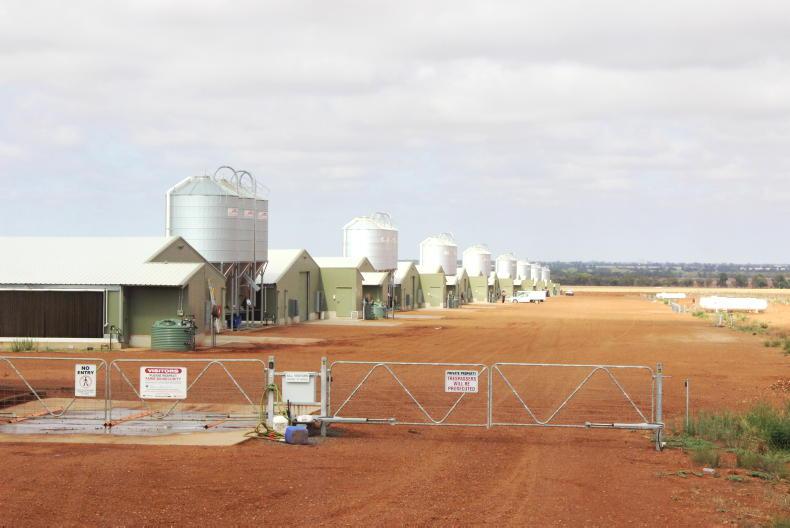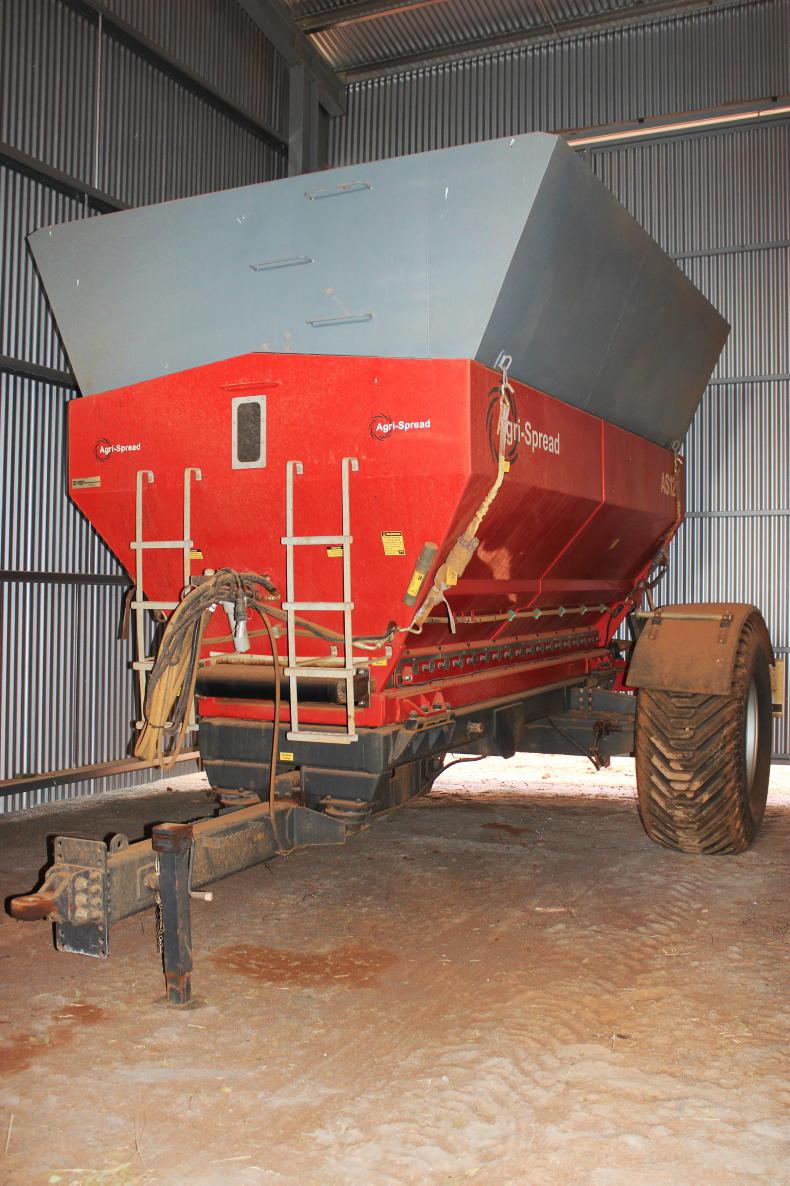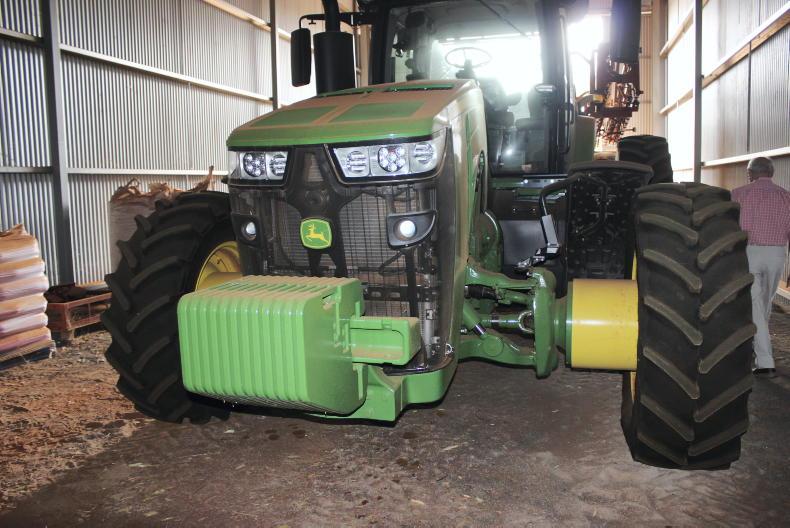One of the many farms visited during the Irish Tillage and Land Use Society (ITLUS) tour to Australia in January 2020 was to Scott Vaessen, who farms near Griffith in New South Wales (NSW).
If that name half rings a bell with you, it is because he has occasionally written an update on farming in that part of the world for the Irish Farmers Journal.
I first met Scott in Ballyhaunis, Co Mayo, when he was visiting Agri-Spread because he had purchased one of their trailed spreaders.

Scott Vaessen
Scott is a trained agronomist, having specialised in cotton. He got into farming through his wife and, following a range of settlements with different parties, they ended up buying out of the farm – about 6,000 acres, with another 3,000ac rented.
The farm is primarily a loess soil, which means it is wind-blown. Scott described the land as “having come from there to here”.
So it is basically sand on clay, which is good to hold water. But rain and water are still precious and greenery is not allowed to grow on stubbles as it would use precious water.
Sheep and crops
In January 2020, he had 1,600 sheep, which were a combination of ewes and lambs.
He commented that the flock size in Australia was at its lowest for 70 years because of the continuing drought at that time.

A transfer or 'mother bin' used to hold grain between the chaser bin and the transport vehicles.
The consequence of this was that meat values were at their highest for quite some time.
At that time, it was his intention to sell a lot of the older ewes in the flock to capitalise on the high market values.
The lambs in the feed lot were on a diet of barley plus minerals and hay made from a combination of wheat, peas and vetch.
His intention then was to put 1,100 ewes in lamb, as well as a further 200 hoggets. He would normally manage the sheep in flocks of 500 to 600.
Water and irrigation
At the time of our visit, Scott was looking at an option to get access to irrigation water.
That would significantly change his cropping options and it would increase the value of the farm.
The soil in the region is particularly good for horticulture and his farm is largely surrounded by almonds, vines and oranges.
Grazing of winter crops with sheep is a common practise across much of Australia
If he gets access to irrigation water, he intends to install seven circular pivots on the farm and then produce crops for grazing.

The robust hitching gear on Scott's John Deere 8270R.
The intention would be to graze for a period, but also to take a seed crop at the end of its life stage.
Grazing of winter crops with sheep is a common practise across much of Australia, but the grazing would be relatively light and normally across a very big area.
Poultry litter
A neighbouring poultry development will have a huge roof area on the chicken houses, which means capacity to collect a lot of water.

The existing poultry units on the neighbouring farm.
The huge numbers involved also means a big feed requirement and high manure availability. However, because of the volumes involved, the manure is to be handled by any agent.
The chickens are bedded with rice hulls and Scott gets access to some of that for spreading on the land.

Construction was ongoing for the expansion of a nearby poultry unit which aimed to sell 200,000 birds per day, five days a week.
This rice litter is a very high-volume material, with 2.5m3/t and so it requires a lot of spreading capacity.

Scott's Irish-made Agri-Spread spreader had additional hopper capacity added to spread the poultry litter from the local poultry unit on his land. The rice hulls have a low bulk density of 2.5m3/t.
To help cope with the high volumes involved, Scott had fitted substantial risers on his Agri-Spread spreader to enable him to carry a modest weight.
A controlled traffic farm
Scott normally grows wheat, barley, canola, field peas and vetch. The crops are managed on a controlled traffic system using 12m multiples and 36m boom widths.

The wheel spacers used to adapt the tractor to the 3m track width for the controlled traffic system.
When we visited, he had just purchased a specialist Weed-It second-hand sprayer.
It cost him AUS$40,000 (€25,500), but he expected that it would result in $40,000 to $80,000 (€25,500 to €51,000) savings per annum through reduced herbicide usage.
The sprayer is only used on the stubbles where it will detect plants and turn on individual nozzles to only spray the weeds present.

The extra-long unloading auger on his Case combine was to cater for the controlled traffic system.
Interestingly, Scott told us that the empty spray cans have a value and could be sold when they are washed clean.

Washed chemical containers were used to generate funds for the local school.
He told us that he was giving his empties to the local school that would sell them as a form of fundraising.
One of the many farms visited during the Irish Tillage and Land Use Society (ITLUS) tour to Australia in January 2020 was to Scott Vaessen, who farms near Griffith in New South Wales (NSW).
If that name half rings a bell with you, it is because he has occasionally written an update on farming in that part of the world for the Irish Farmers Journal.
I first met Scott in Ballyhaunis, Co Mayo, when he was visiting Agri-Spread because he had purchased one of their trailed spreaders.

Scott Vaessen
Scott is a trained agronomist, having specialised in cotton. He got into farming through his wife and, following a range of settlements with different parties, they ended up buying out of the farm – about 6,000 acres, with another 3,000ac rented.
The farm is primarily a loess soil, which means it is wind-blown. Scott described the land as “having come from there to here”.
So it is basically sand on clay, which is good to hold water. But rain and water are still precious and greenery is not allowed to grow on stubbles as it would use precious water.
Sheep and crops
In January 2020, he had 1,600 sheep, which were a combination of ewes and lambs.
He commented that the flock size in Australia was at its lowest for 70 years because of the continuing drought at that time.

A transfer or 'mother bin' used to hold grain between the chaser bin and the transport vehicles.
The consequence of this was that meat values were at their highest for quite some time.
At that time, it was his intention to sell a lot of the older ewes in the flock to capitalise on the high market values.
The lambs in the feed lot were on a diet of barley plus minerals and hay made from a combination of wheat, peas and vetch.
His intention then was to put 1,100 ewes in lamb, as well as a further 200 hoggets. He would normally manage the sheep in flocks of 500 to 600.
Water and irrigation
At the time of our visit, Scott was looking at an option to get access to irrigation water.
That would significantly change his cropping options and it would increase the value of the farm.
The soil in the region is particularly good for horticulture and his farm is largely surrounded by almonds, vines and oranges.
Grazing of winter crops with sheep is a common practise across much of Australia
If he gets access to irrigation water, he intends to install seven circular pivots on the farm and then produce crops for grazing.

The robust hitching gear on Scott's John Deere 8270R.
The intention would be to graze for a period, but also to take a seed crop at the end of its life stage.
Grazing of winter crops with sheep is a common practise across much of Australia, but the grazing would be relatively light and normally across a very big area.
Poultry litter
A neighbouring poultry development will have a huge roof area on the chicken houses, which means capacity to collect a lot of water.

The existing poultry units on the neighbouring farm.
The huge numbers involved also means a big feed requirement and high manure availability. However, because of the volumes involved, the manure is to be handled by any agent.
The chickens are bedded with rice hulls and Scott gets access to some of that for spreading on the land.

Construction was ongoing for the expansion of a nearby poultry unit which aimed to sell 200,000 birds per day, five days a week.
This rice litter is a very high-volume material, with 2.5m3/t and so it requires a lot of spreading capacity.

Scott's Irish-made Agri-Spread spreader had additional hopper capacity added to spread the poultry litter from the local poultry unit on his land. The rice hulls have a low bulk density of 2.5m3/t.
To help cope with the high volumes involved, Scott had fitted substantial risers on his Agri-Spread spreader to enable him to carry a modest weight.
A controlled traffic farm
Scott normally grows wheat, barley, canola, field peas and vetch. The crops are managed on a controlled traffic system using 12m multiples and 36m boom widths.

The wheel spacers used to adapt the tractor to the 3m track width for the controlled traffic system.
When we visited, he had just purchased a specialist Weed-It second-hand sprayer.
It cost him AUS$40,000 (€25,500), but he expected that it would result in $40,000 to $80,000 (€25,500 to €51,000) savings per annum through reduced herbicide usage.
The sprayer is only used on the stubbles where it will detect plants and turn on individual nozzles to only spray the weeds present.

The extra-long unloading auger on his Case combine was to cater for the controlled traffic system.
Interestingly, Scott told us that the empty spray cans have a value and could be sold when they are washed clean.

Washed chemical containers were used to generate funds for the local school.
He told us that he was giving his empties to the local school that would sell them as a form of fundraising.















 This is a subscriber-only article
This is a subscriber-only article











SHARING OPTIONS: